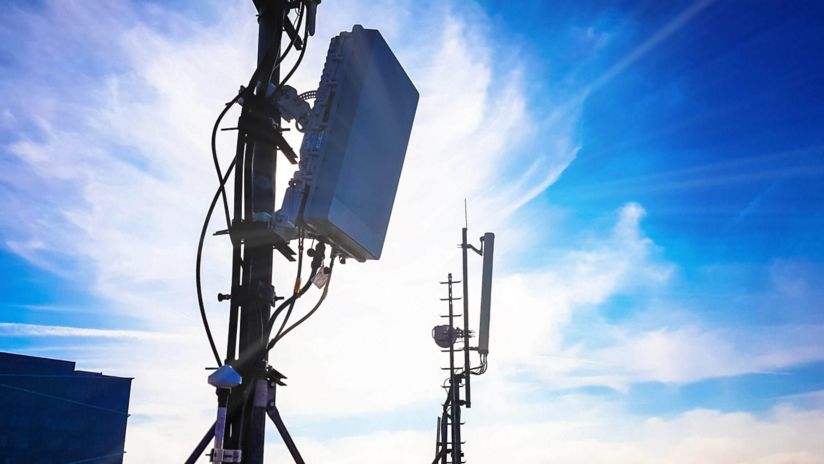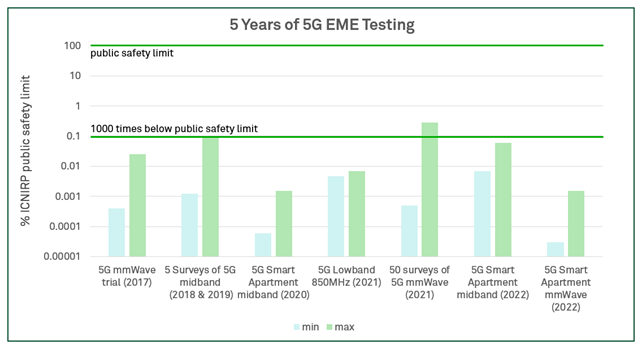Five years of 5G EME testing – what have we found?

As we continue our 5G rollout around Australia, we’re committed to sharing the latest information from health agencies on the safety of 5G, and sharing our real-world tests of 5G electromagnetic energy (EME) levels.
We’ve been testing 5G EME extensively since 2017, including early trials of 5G networks before we rolled the technology out on our network, further testing of our first commercial 5G deployments in 2019, and now the rollout of our latest 5G mmWave technology.
We have tested 5G in real-world settings where consumers are using it every day, such as in cafes, shopping precincts, sports fields, schools, CBDs, residential streets, as well as inside homes and apartments.
Testing also included EME measurements across a number of distances - for example, from directly opposite a 5G site, to measurements in the next suburb, and also testing while running the 5G network at high capacity.
Finding 1: 5G EME levels 1000 times below safety limits
Throughout our extensive testing, our test results show that our 5G technology produces EME levels at around 1000 times below the safety limits in many cases.

This graph displays EME levels on a logarithmic scale, as a percentage of the EME safety limits.
The chart above shows our EME readings from 5G in a live network between 2017 to 2022. It’s a way of showing people the real data on 5G and related electromagnetic energy (EME).
The chart shows the minimum and maximum EME levels measured as a percentage compared to the public EME safety limit from ARPANSA which is 100%.
Finding 2: 5G EME levels are similar to 3G and 4G (but 5G is also more efficient)
We have also observed lower EME levels from 5G under normal use conditions, like video streaming, browsing social media, or working remotely with video meetings and email.
In these tests, the network is not artificially loaded to a high capacity and more closely represents what your everyday usage might look like.
Overall, throughout our testing, we’ve determined that the 5G EME levels seen (under high capacity) are similar to those produced by the existing 3G and 4G technology we continue to use across our network.
However, it’s worth noting that 5G is far more efficient, providing faster connections and greater capacity at these similar EME levels.
Sharing our testing results widely and publicly
If you’d like to dive further into the detail and the data, we’re happy to provide it. You can access more of our 5G EME testing reports on the Telstra EME website.
Our goal in testing EME levels associated with 5G is to provide you with verifiable, fact-based information from real-world settings and locations in Australia.
We continue to openly share our 5G EME testing results, and these are now included in the international 5G EMF Survey maps published by the GSMA. We also publish the compliance certificates for each of our mobile base stations on the Radiofrequency National Site Archive.
We’re committed to sharing these results to ensure that you can have confidence that our 5G network technology is thoroughly tested, and that it complies with national and international standards. We’ll continue to conduct these tests and share results as part of this commitment.